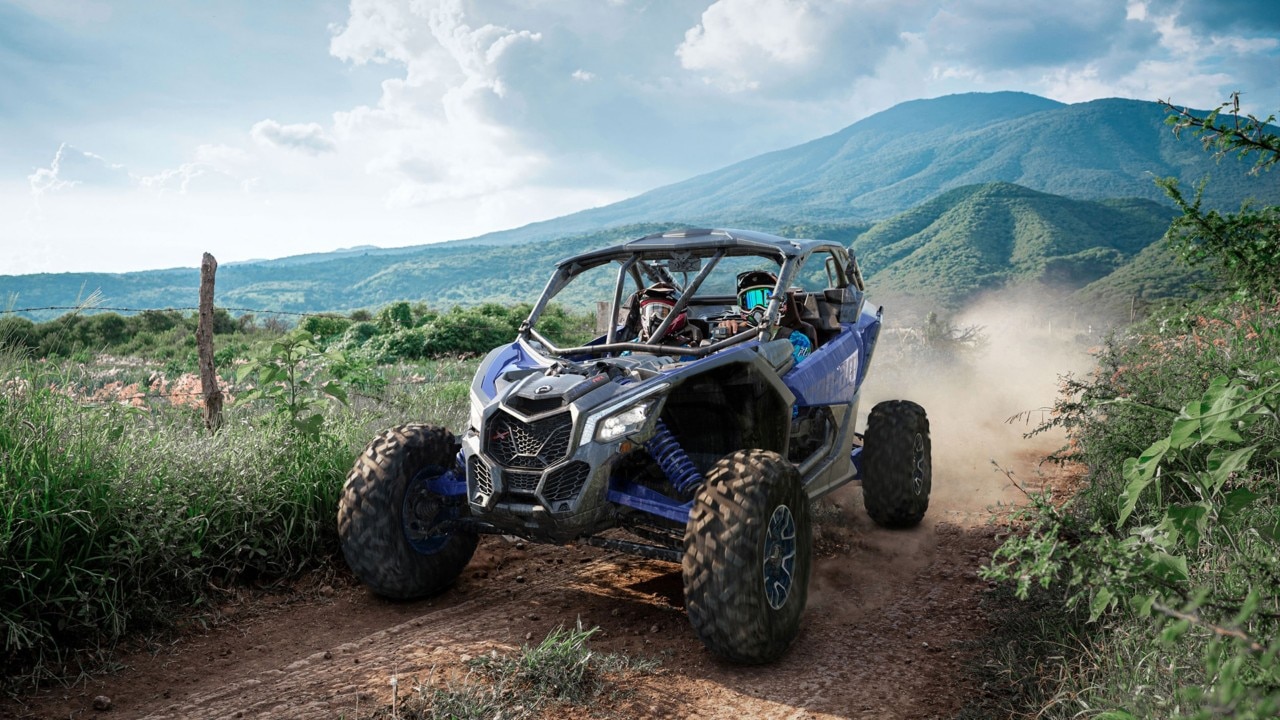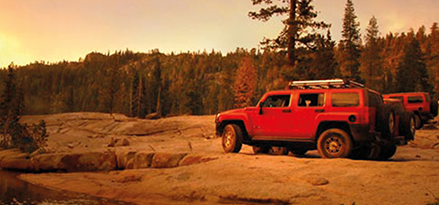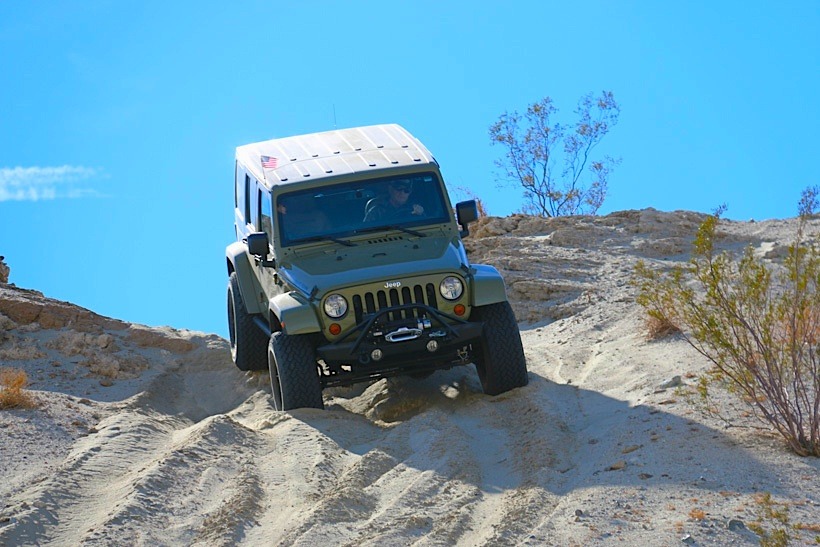New off-roaders should prioritize vehicle preparation and personal safety gear. Understanding terrain and weather conditions is essential for a safe adventure.
Embarking on off-road adventures is an exhilarating way to explore the great outdoors, but it comes with its unique set of challenges. Novices to the off-roading community should arm themselves with knowledge and the right equipment to navigate rugged landscapes safely.
A well-rounded introduction to this thrilling activity includes learning about your vehicle’s capabilities, the importance of having a recovery kit, and the basic off-road driving techniques. Joining a community or a group of experienced off-roaders can provide invaluable insights and support. By respecting the environment and staying prepared for emergencies, enthusiasts can ensure their off-road experiences are memorable for all the right reasons. As you gear up for your journey, remember that safety is not just about personal well-being; it’s also about preserving the trails for future adventurers.

Credit: www.reedmantollsubaruofexton.com
Embarking On Off-road Adventures
Off-roading thrills with the promise of untamed landscapes and the joy of the unbeaten path. Yet, the adventure demands respect. Safety is paramount. Seasoned enthusiasts and novices alike must prepare with the right tools and knowledge. Discover the essentials for your journey beyond the tarmac.
Choosing The Right Vehicle
Selecting an off-road vehicle is not just about looks. It’s about performance and reliability. Your choice should match the terrain you plan to conquer. Research is key. Start with vehicles renowned for their off-road capabilities. Consider ground clearance, 4×4 systems, and tire durability.
| Vehicle Feature | Importance |
|---|---|
| 4-Wheel Drive | Essential for tough terrain |
| All-Terrain Tires | For grip and durability |
| Skid Plates | Protects undercarriage |
Essential Gear Checklist
Packing the right gear can turn a risky trip into a memorable adventure. Consider this checklist a starting point. Adjust based on specific needs and trip duration. Remember, preparedness saves lives.
- Navigation tools – GPS and maps
- Recovery gear – Winch, shovel, and traction mats
- Communication devices – Satellite phone and radio
- Survival kit – First aid, water, and food supplies
- Vehicle spares – Extra fuel, tire, and repair tools
Understanding Terrain Types
Understanding Terrain Types is crucial for new off-roaders. Different terrains pose unique challenges and require specific skills for safe navigation. Familiarity with the ground beneath your wheels will enhance your off-road experience. Let’s explore the key terrain types you’ll encounter and tips to tackle them effectively.
Navigating Mud And Water
Mud and water can be deceptive. Underneath the surface lies a world of potential hazards. Follow these tips to ensure a safe passage:
- Check the Depth: Use a stick to gauge water levels before driving through.
- Stay in Low Gear: Maintain a steady, low speed to prevent engine flooding.
- Avoid Sudden Movements: Sharp turns or quick acceleration can lead to loss of control.
- Follow Existing Tracks: They often indicate a safer route taken by previous vehicles.
- Wash Your Vehicle Afterward: Mud can hide in undercarriage areas, leading to rust.
Conquering Rocky Paths
Rocky paths require precision and patience. Use these strategies to dominate the rocks:
- Inspect Your Path: Walk the route first to spot potential obstacles.
- Use Low Gears: This provides better control and more power to overcome obstacles.
- Keep Wheels Straight: This minimizes the risk of tire damage or slipping.
- Spotter Assistance: A person outside the vehicle can guide you through tricky sections.
- Go Slow: Take your time to adjust your line and prevent vehicle damage.
Vehicle Preparation For The Trail
Embarking on off-road adventures requires more than just a sense of adventure. Preparing your vehicle for the trail is critical. It’s the difference between a memorable journey and a stranded situation. Let’s dive into vehicle preparation and ensure your off-road experience is both thrilling and safe.
Regular Maintenance Must-dos
Consistent maintenance is key to off-road readiness. Before hitting the trails, conduct a thorough check-up of your vehicle.
- Oil Change: Fresh oil reduces engine wear.
- Brake Check: Reliable brakes are vital for safety.
- Tire Inspection: Ensure tires have proper tread and pressure.
- Lights: All lights must function correctly for visibility.
- Fluid Levels: Check and top off all essential fluids.
- Battery: Secure and test the battery to avoid power issues.
Specialized Off-roading Modifications
To tackle tough terrains, special modifications can equip your vehicle with enhanced capabilities.
| Modification | Benefit |
|---|---|
| Suspension Lift | Increases ground clearance |
| All-Terrain Tires | Improves grip on varied surfaces |
| Skid Plates | Protects undercarriage from damage |
| Winch | Assists in recovery situations |
| Snorkel | Allows for safe water crossings |
Remember, preparing your vehicle is just the start. Equip yourself with knowledge and always respect the trail. Safe and happy off-roading!

Credit: www.brp-world.com
Mastering Off-road Driving Techniques
Welcome to the thrilling world of off-roading, where adventure meets the untamed environment. For newcomers, mastering the essential driving techniques is crucial. It ensures not only your safety but also an enjoyable experience. Let’s dive into the fundamentals of off-road driving.
Control And Balance
Maintain a steady pace and avoid sudden movements on uneven terrain. Good control means smooth acceleration and braking. This keeps your vehicle stable.
Always keep your vehicle balanced. Distribute weight evenly. This prevents tipping over on slopes.
Use low gears to climb hills. This gives you better control. For downhill, use engine braking to stay safe.
- Practice steering techniques
- Learn to read the terrain
- Adjust tire pressure for grip
Tackling Obstacles
When you face an obstacle, approach it head-on. Align your wheels straight. This helps in crossing safely.
Inspect the obstacle before trying to cross it. Look for firm ground. Avoid soft spots that can trap your vehicle.
| Obstacle Type | Approach | Technique |
|---|---|---|
| Rocky Terrain | Slow | Pick a line |
| Mud Patches | Cautious | Maintain momentum |
| Water Crossings | Measured | Check depth |
Remember to use a spotter for tough spots. They can guide you through safely.
Never rush when tackling obstacles. Take your time. Plan your path before moving ahead.
Trail Etiquette And Environmental Responsibility
Welcome to the adventurous world of off-roading! As beginners set out to explore rugged terrains, it’s crucial to embrace trail etiquette and environmental responsibility. These practices ensure the great outdoors remain pristine for future adventurers. Let’s delve into the core principles every new off-roader should follow.
Respect For Nature
Preserving natural habitats is at the heart of off-roading. Always stick to designated trails to avoid damaging the ecosystem. Wildlife should be observed from a distance, and never chased or disturbed.
- Stay on trails to protect plant life.
- Avoid sensitive areas like wetlands and meadows.
- Pack out what you pack in. Leave no trash behind.
Following these simple steps shows a deep respect for the environment.
Interacting With Fellow Off-roaders
Good relations with fellow off-roaders make the experience enjoyable for everyone. Use hand signals or vehicle lights to communicate on narrow paths. Yield to uphill traffic, as they have the right of way.
| Action | Meaning |
|---|---|
| Thumbs up | All clear |
| Hand raise | Stop needed |
- Slow down when approaching others.
- Communicate effectively.
- Help those in need.
These actions build a community of responsible off-roaders.

Credit: www.mobil.com
Emergency Situations And How To Handle Them
Exploring rugged terrains comes with its thrills and risks. Off-roaders must prepare for emergencies. Knowing the right actions to take can turn a potential disaster into a manageable situation. Safety should always be a top priority. This section covers essential tips for dealing with emergencies off the beaten path.
First-aid Fundamentals
Accidents happen, and injuries are a reality in off-roading adventures. A well-stocked first-aid kit is your first line of defense. Include items such as:
- Bandages of various sizes
- Antiseptic wipes and creams
- Splints for immobilizing fractures
- Pain relievers like ibuprofen
- Emergency blanket to retain body heat
Know how to use each item. Quick and correct first-aid response can prevent complications.
Vehicle Recovery Strategies
Getting stuck is part of the off-road experience. Stay calm and assess your situation. Use the following strategies:
- Determine why the vehicle is stuck.
- Check if tires have traction.
- Use recovery boards under the wheels.
- Engage winches or tow straps if available.
Always maintain a recovery kit in your vehicle. This should include:
| Recovery Item | Usage |
|---|---|
| Shovel | To dig out mud or sand |
| Winch | For pulling the vehicle free |
| Tow straps | For assistance from another vehicle |
| Snatch block | To increase winching power |
Practice these techniques before you need them. Ensure you know how to operate your equipment safely.
Navigating Legalities And Permissions
Before venturing off-road, it’s crucial to understand the legalities and permissions. This knowledge ensures a safe, lawful adventure. Let’s dive into the essentials of off-road navigation legality.
Understanding Land Ownership
Off-roading takes place on various land types. Each type has its rules. Public lands often allow off-roading. Private lands require owner permission. Always check ownership before driving.
- Public Lands: Research areas designated for off-road use.
- Private Lands: Secure consent in writing to avoid trespassing.
- Protected Areas: Know the spots off-limits to vehicles.
Obtaining Necessary Permits
Permits are a must for legal off-roading. They vary by location and land type. Get permits before your trip. Here’s a simple permit guide:
| Type of Land | Permit Required | Where to Obtain |
|---|---|---|
| State Parks | Yes | Park Office/Website |
| National Forests | Varies | Forest Service |
| Bureau of Land Management (BLM) | Varies | BLM Office/Website |
Always carry permits during your trips. Display them if required. This keeps your off-road experience hassle-free.
Building An Off-roading Community
Building an Off-Roading Community is about sharing experiences and learning from others. It’s a way to enhance safety, skill, and overall enjoyment. By connecting with fellow enthusiasts, new off-roaders can gain valuable insights and make lifelong friends. Here’s how to get started.
Joining Local Clubs
Local clubs offer a wealth of knowledge for newcomers. They provide a platform to meet experienced riders who know the trails and can offer guidance. Check out these benefits:
- Trail Wisdom: Learn the best local routes and their challenges.
- Skills Sharing: Pick up new techniques and safety tips from seasoned off-roaders.
- Group Rides: Enjoy the trails with others who share your passion.
Find a club near you by searching online or visiting local off-road shops.
Participating In Events And Jamborees
Events and jamborees are great for building skills. They often include competitions, workshops, and social gatherings. Here’s what they offer:
| Event Type | Benefits |
|---|---|
| Competitions | Test your skills and learn from others. |
| Workshops | Receive hands-on training from experts. |
| Socials | Connect with a community of supportive riders. |
Check out event calendars on club websites or social media for upcoming dates.
Frequently Asked Questions
How Do I Drive Safe For New Drivers?
For new drivers, always stay focused on the road, obey traffic laws, maintain a safe speed, avoid distractions, and practice defensive driving techniques.
What To Do Before Going Off-roading?
Before embarking on off-roading, ensure your vehicle is in top condition and equipped with necessary gear. Familiarize yourself with the trail difficulty, check weather forecasts, and inform someone about your travel plans. Also, pack emergency supplies and a first-aid kit.
What Precautions Are Taken When Driving A 4wd Vehicle?
Ensure proper tire pressure for optimal traction and stability. Engage 4WD mode as needed for road conditions. Use low gears on steep inclines. Avoid sudden maneuvers and maintain steady speeds. Regularly check the 4WD system for maintenance needs.
What Is The Appropriate Braking Technique For Off Road Driving?
Use gentle, steady pressure on the brakes when off-roading. Avoid sudden stops to maintain control and prevent skidding.
Conclusion
Venturing off-road can be exhilarating, yet safety is paramount. Embrace these strategies to ensure your adventures are not just thrilling, but also secure. Remember, preparedness and knowledge are your allies on rugged terrain. Hit the trails with confidence, and let the thrill of the wild be matched by your commitment to safety.
Stay safe, explore responsibly, and treasure the off-road experience.

